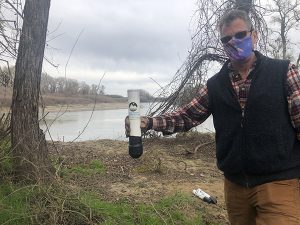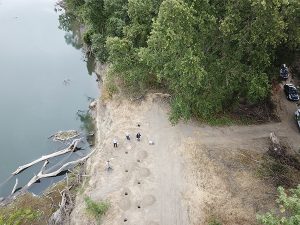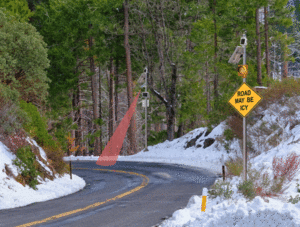GRASS VALLEY, CA — High Sierra Electronics announced REMS™ — a new innovative Remote Erosion Monitoring System for earthen levees and embankment dams that is designed to detect when and where erosion has occurred and automatically alert and send information to the levee and dam owners, operating managers, and local public safety officials.
The new automated levee erosion detection system uses a network of beacon sensors that are embedded at levee system or embankment dam sites that are identified as at risk for erosion. If erosion occurs and washes the bank away, the beacons immediately transmit their status. All beacon and site data is managed in Contrail® cloud-hosted monitoring software where users can keep track of the REMS site status. Changes in beacon status can send custom alert notifications to varying stakeholders via e-mail, SMS, or text.

The REMS is being tested for the first time for a Levee Safety project, funded by a CA DWR Grant, on the Sacramento River 35 miles north of Sacramento, in a multi-agency collaborative effort to help detect erosion early and alert the levee owners. The sites chosen for the project are at vulnerable locations along the river where erosion occurs very quickly.
“We developed REMS to address one of the major safety risk factors associated with levees, and that’s erosion and the potential for levee failure and flooding. With increasing populations in leveed areas, the lives and property of those living behind the levee can be at great risk,” said Tom Ogden, Product Manager. “At High Sierra Electronics, our expertise for the past 29 years is real-time monitoring using sensors and telemetry. We put these to use in public safety and warning systems and we looked at how we could apply similar technology in this application where there are clearly some major risks,” he explained.
Most of the nation’s levees are earthen embankments constructed of sand or soil which can erode easily due to the long-term effects of seepage and saturation, overtopping, and fast-flowing water. While today’s new levee systems are designed and constructed to high engineering performance standards and guidelines established by the U.S. Army Corps of Engineers, many existing levee systems were not built to current standards. Adding to the risk is the aging infrastructure — the average age of levees in the U.S. is 50 years. These levees require regular inspections, maintenance, upgrades, and patrolling for high water. Levee erosion becomes a huge challenge to monitor, often not visible and missed because of what’s going on below the surface. As the levee systems get older, inspections and maintenance become more challenging.

“We believe REMS to be a really cost-effective solution that will make it possible to monitor potential levee erosion sites 24×7 and alert key personnel about problems early so they can take timely action,” added Ogden.
There are estimated to be about 100,000 miles of levees in the U.S. Two-thirds of the U.S population are in counties that have at least one levee. Thirty thousand miles of levees are documented in the National Levee Database, with 97% of these earthen levees. The U.S. Army Corps of Engineers has responsibility for over 14,000 miles of levees under its Levee Safety Program. A further estimated 85,000 miles of levees are privately owned and operated.
In the last five to six years, the Army Corps has conducted inspections of levees under its Levee Safety Program. With about half of them inspected today, the Army Corps reports that 20% are of moderate- to higher-risk, with bank erosion considered one of the top three risk factors.
REMS is aimed at local levee owners, levee safety authorities, levee stakeholders, states, local governments, tribes, and private entities. Learn more about REMS, Remote Erosion Monitoring System for levees.
About High Sierra Electronics, Inc.
Established in 1992, High Sierra Electronics, Grass Valley, California, has been designing and manufacturing environmental monitoring systems for the protection of lives and property. High Sierra Electronics’ systems help identify threats posed by the weather, which include flooding, dangerous road conditions, and vulnerable dams and levees. High Sierra Electronics is part of Advanced Environmental Monitoring (aemonitoring.com), a family of innovative companies whose technologies enable decision-makers to improve their reaction time to weather and environmental events, helping to protect communities, people, and infrastructure. For more information, visit www.hsierra.com or phone 800-275-2080.

